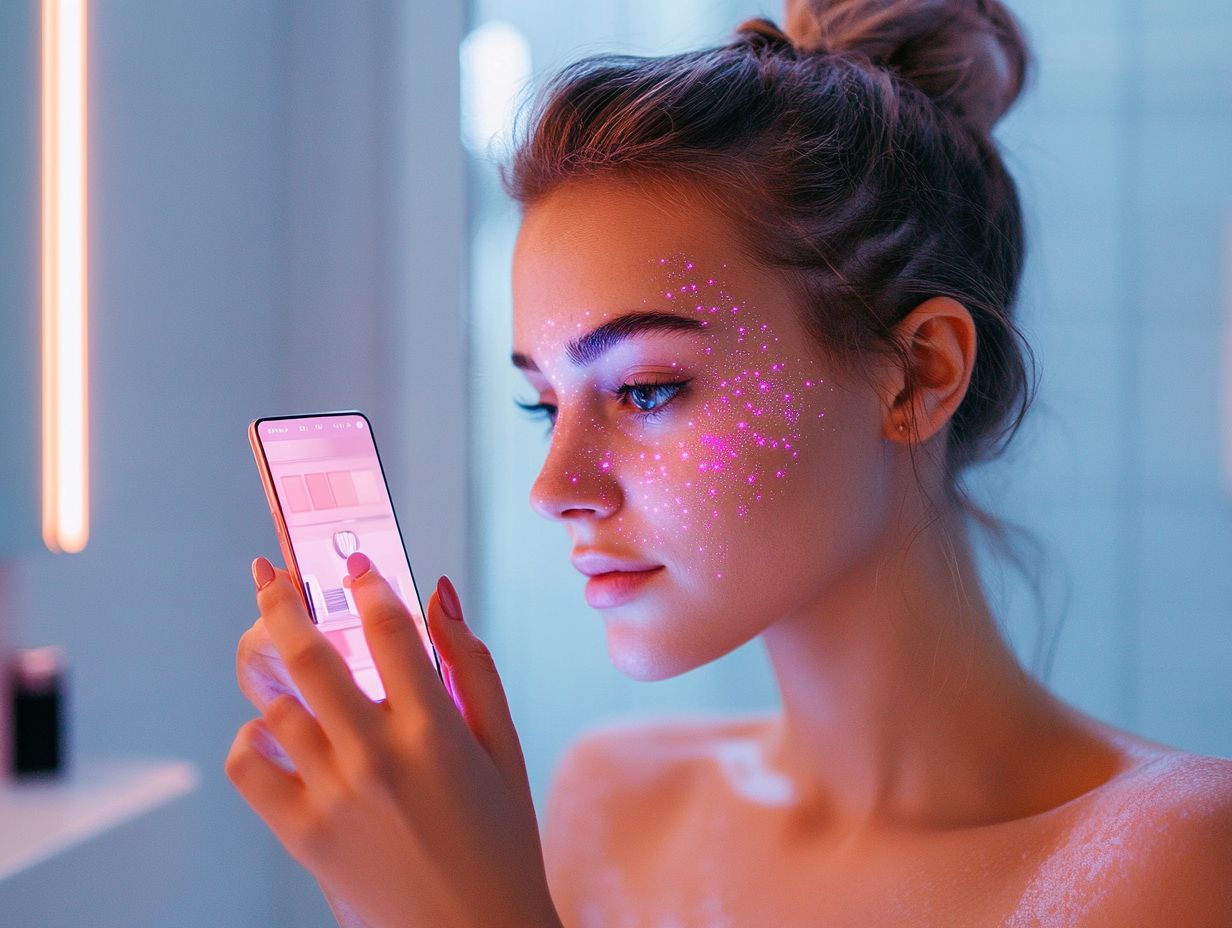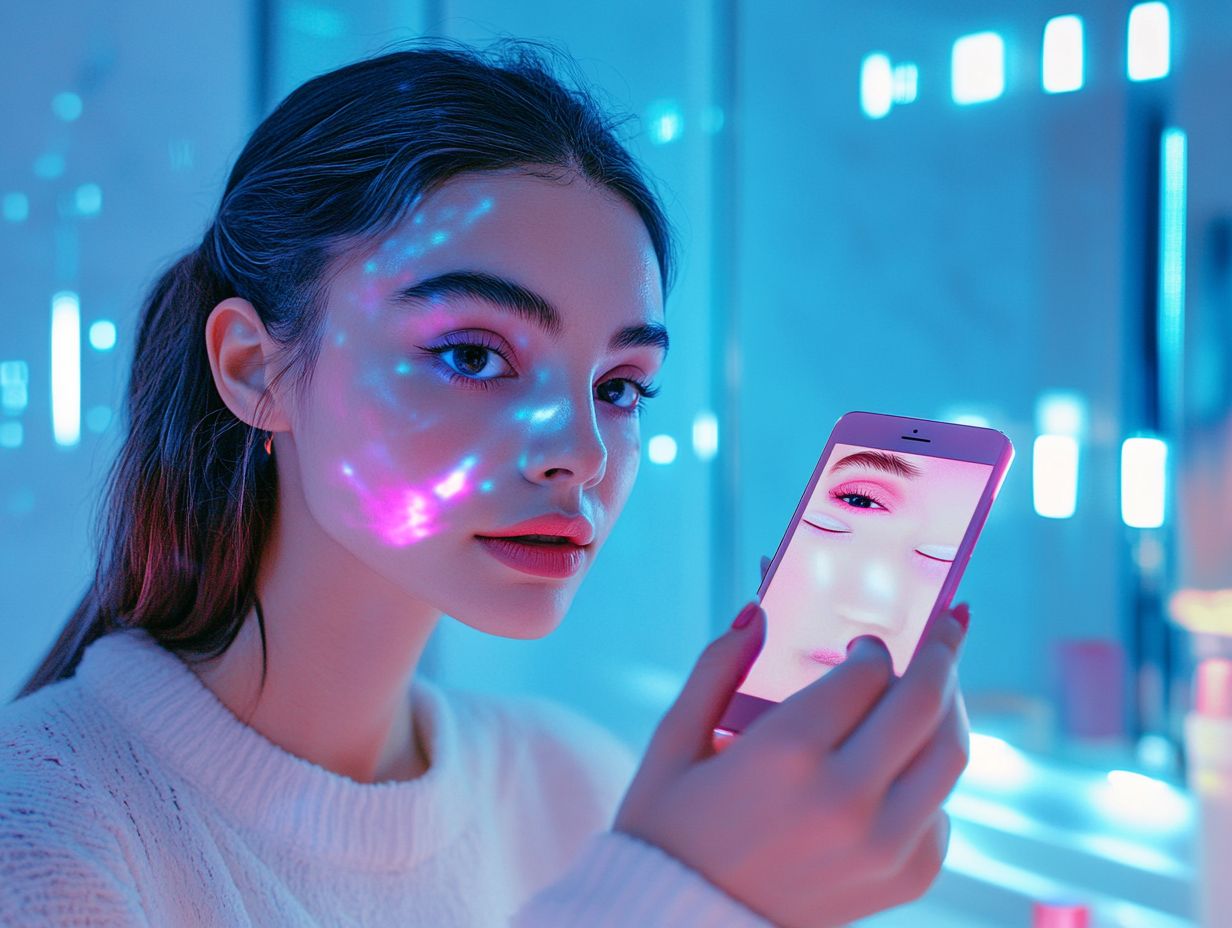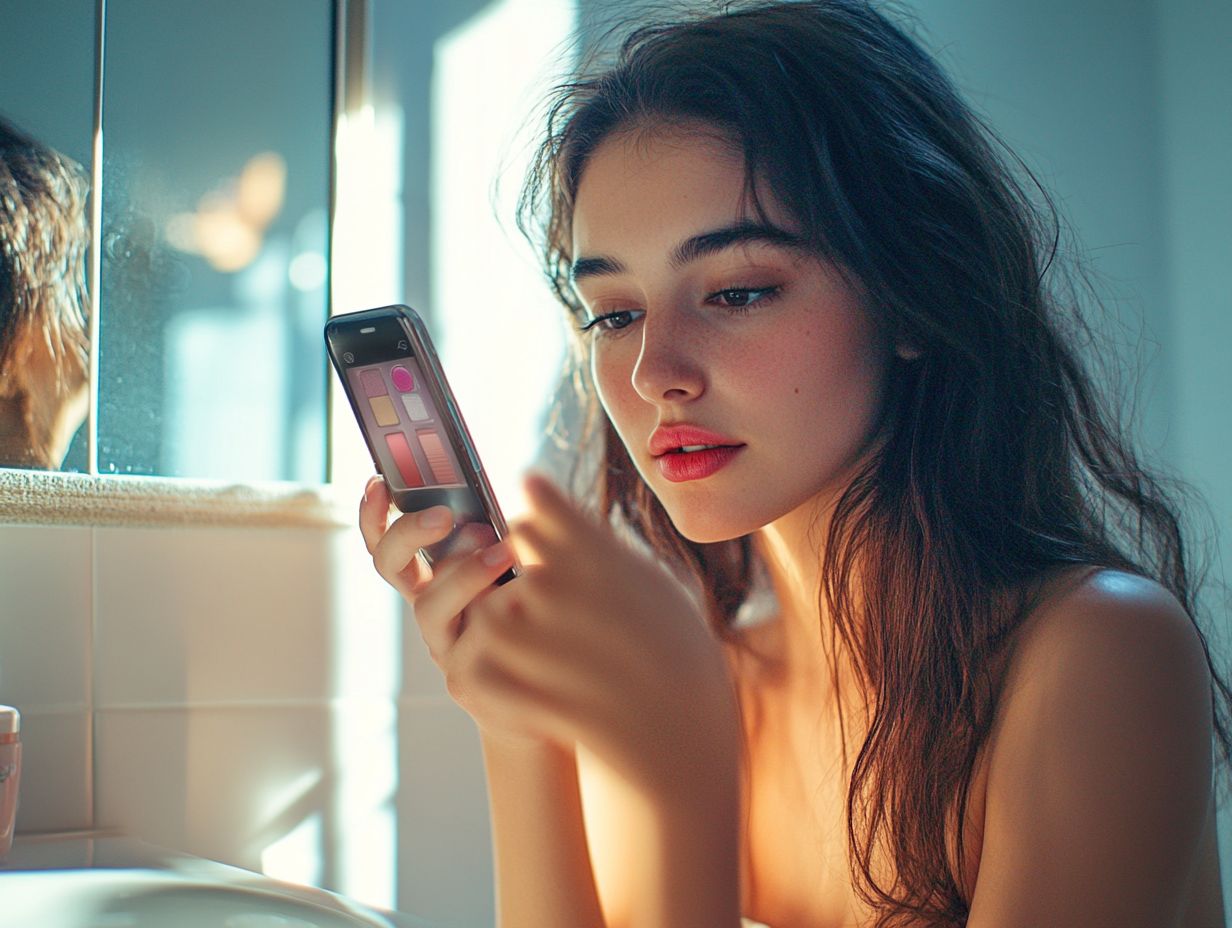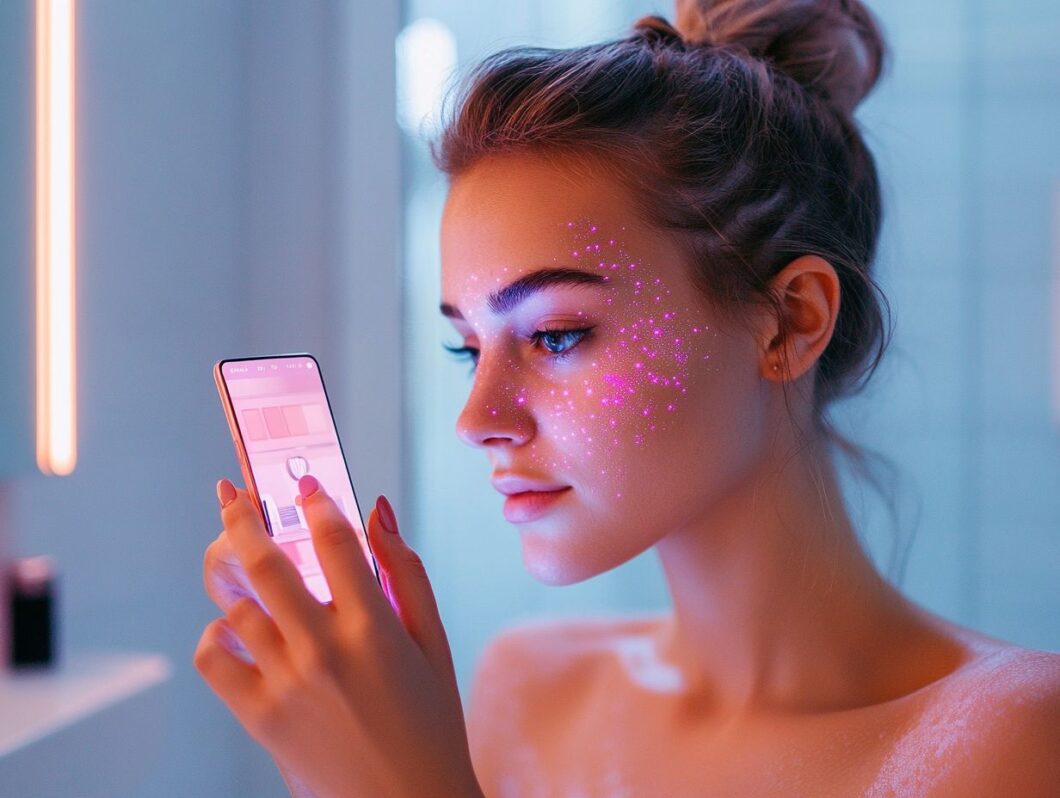The beauty industry is currently experiencing a revolution with the emergence of virtual makeup try-ons, which seamlessly merge technology and cosmetics in innovative ways.
This groundbreaking approach provides both convenience and customization, enabling users to explore different looks from the comfort of their own homes. However, it also raises important questions regarding accuracy and privacy.
In this exploration, I will discuss how virtual makeup try-ons function, examine their pros and cons compared to traditional in-store testing, and offer tips for maximizing your experience.
Whether you are a beauty enthusiast or simply curious about the intersection of technology and beauty, this examination of technology’s impact on the beauty industry promises to be engaging.
Key Takeaways:
The Rise of Virtual Makeup Try-Ons

The rise of virtual makeup try-ons signifies a significant transformation within the beauty industry, driven by advancements in augmented reality (AR) technologies and AI-powered applications.
I have observed how beauty brands such as L’Oréal Paris and Sephora have embraced this innovative trend, providing digital cosmetic trials that enable consumers to experiment with makeup products and hair color from the comfort of their homes.
This interactive experience not only enhances user engagement but also informs purchasing decisions, revolutionizing the way individuals explore beauty products.
How Technology is Changing the Beauty Industry
Technology is fundamentally reshaping the beauty industry by introducing innovations that enhance the overall shopping experience for consumers, including advancements in beauty technology and immersive experiences.
With the emergence of augmented reality (AR) and artificial intelligence (AI), I find that brands are now able to offer virtual try-on solutions, enabling users to experiment with various makeup looks from the comfort of their homes.
This shift not only give the power tos me, as a consumer, to make informed decisions but also significantly influences my purchasing behavior, as I feel more confident in my choices.
I have noticed that retailers are increasingly embracing these technologies by integrating them into their websites and in-store displays, providing personalized product recommendations tailored to individual preferences.
As a result, customer engagement is evolving, leading to an increase in online sales and a more interactive shopping journey.
Benefits of Virtual Makeup Try-Ons
I find that virtual makeup try-ons provide numerous benefits that align with the evolving needs of consumers in the beauty industry. They offer unparalleled convenience and extensive customization options.
By enabling users to experiment with various makeup looks, including lipstick shades and skincare products, these tools make the exploration of beauty more accessible and enjoyable.
Furthermore, virtual try-ons effectively streamline the decision-making process, allowing for more informed purchasing decisions while minimizing the risk of product wastage.
Convenience and Customization

The convenience and customization features of virtual makeup technology have truly transformed my beauty shopping experience, allowing me to create personalized recommendations based on my unique preferences and beauty profile.
This innovative approach enables me to experiment with various makeup application techniques, such as contouring or highlighting, all from the comfort of my own home. By providing access to an extensive range of products and color palettes, these tools allow for virtual trials that help me visualize different looks before making a purchase.
As beauty innovations continue to emerge, their role in enhancing user engagement and satisfaction becomes increasingly significant. With each virtual trial, I can fine-tune my choices, ensuring that my selections align perfectly with my style and skin tone. This ultimately transforms the way I experience and enjoy beauty.
Saving Time and Money
One of the most appealing aspects of virtual makeup try-ons for me is their potential to save both time and money, providing cost-effective solutions for exploring a wide range of beauty products. These innovative simulations allow me to experiment with various shades and textures from the comfort of my home, significantly reducing the need for in-store visits.
As a result, this shift not only minimizes the risk of purchasing unsuitable items but also enhances my ability to make informed decisions. As I become more accustomed to virtual experiences, my shopping habits evolve, prioritizing convenience and efficiency while greatly reducing impulse buys and returns.
This transformation in my consumer behavior also correlates with notable financial benefits, enabling me to optimize my budget and make tailored choices that truly reflect my unique style.
Potential Drawbacks of Virtual Makeup Try-Ons
While I recognize that virtual makeup try-ons offer significant advantages, I also understand that they come with potential drawbacks that consumers should carefully consider, especially when it comes to the accuracy and realism of the beauty experience.
Accuracy and Realism

The accuracy and realism of virtual makeup try-ons can vary significantly depending on the underlying technologies, such as facial recognition and 3D rendering, which are essential for delivering a lifelike simulation of makeup application.
As technology continues to advance, these systems are becoming increasingly sophisticated, providing users with an immersive and interactive makeup fitting experience. Innovations like artificial intelligence and augmented reality play a crucial role in capturing intricate facial details, thereby enhancing the user’s ability to see how different products complement their unique features.
However, challenges still persist, including issues related to lighting conditions, device compatibility, and the algorithm’s capacity to accurately represent diverse skin tones. These factors can impact user satisfaction, often resulting in a disconnect between virtual and real-world outcomes.
This highlights the ongoing need for refinement to improve the overall effectiveness of these products.
Privacy and Security Concerns
Privacy and security concerns represent significant drawbacks for many users of virtual makeup try-on technologies, particularly in relation to how their user data is collected, utilized, and protected.
This apprehension primarily stems from the fear that personal information, including facial recognition data and shopping habits, may be mismanaged or inadequately secured. For consumers, the foundation of trust lies in knowing that brands are dedicated to protecting their sensitive information while providing innovative technology.
To build that trust, companies should adopt transparent data practices, which involve clearly articulating data usage policies and implementing robust encryption methods to safeguard user data.
Actively engaging users in discussions about data privacy can further demonstrate a commitment to ethical practices, which not only alleviates concerns but also fosters brand loyalty.
How Virtual Makeup Try-Ons Work
In my experience, virtual makeup try-ons leverage advanced technology, such as facial recognition and augmented reality (AR), to provide an interactive online simulation.
This innovative approach enables users to visualize cosmetic products on their own faces in real time, enhancing their decision-making process when it comes to makeup purchases.
Understanding the Technology Behind It

Understanding the technology behind virtual makeup try-ons is essential for me to appreciate how augmented reality and AI-powered applications deliver realistic makeup simulations through advanced 3D rendering techniques.
These innovative systems utilize sophisticated algorithms to analyze facial features and skin tones, ensuring that the makeup products are applied in a manner that feels both authentic and personalized. By leveraging AR, I can see a simulated application in real-time, which allows for an interactive experience as I experiment with various makeup looks.
AI plays a critical role in adapting the virtual applications based on my individual preferences and behaviors, fostering a more tailored beauty journey. As this technology continues to evolve, I believe it will not only enhance consumer satisfaction but also reshape the dynamics between brands and their clientele, creating a more immersive shopping experience in the beauty industry.
Can Virtual Try-Ons Replace In-Store Testing?
The question of whether virtual try-ons can effectively replace in-store testing is becoming increasingly relevant as advancements in beauty technology continue to evolve and enhance the customer experience.
Pros and Cons of Each Method
Each method of exploring beauty products, whether virtual or in-store, presents distinct pros and cons that influence my preferences and the overall beauty exploration experience.
Virtual makeup try-ons offer me unparalleled convenience, enabling me to experiment with various shades and styles from the comfort of my home. This accessibility is especially beneficial for my busy lifestyle or when I find myself in areas with limited access to beauty retailers.
On the other hand, in-store testing provides a tactile experience that virtual tools often lack. I appreciate the ability to feel the texture of products, observe how they interact with natural light, and receive personalized advice from experts.
While I find virtual options excel in ease of access, I also value the sensory engagement and instant gratification that comes with selecting products on-site.
Tips for Using Virtual Makeup Try-Ons Effectively
To maximize the effectiveness of virtual makeup try-ons, I adhere to specific tips and best practices that enhance the accuracy of my virtual beauty experience.
Maximizing Accuracy and Results
Maximizing accuracy and results in virtual makeup try-ons requires my active engagement with the technology to ensure that I achieve realistic outcomes that align with my expectations.
To enhance the accuracy of these simulations, I pay close attention to several key factors, such as optimal lighting conditions and strategic camera angles.
I find that natural light is often the best choice, as it provides a true representation of colors and textures, while dim or harsh lighting can distort the appearance of makeup products. Positioning my device at eye level allows me to capture a flattering and realistic view.
Additionally, selecting products that closely match my skin tone and personal style significantly enhances the virtual experience, ensuring that the makeup appears as it would in real life, making the try-on both reliable and enjoyable.


